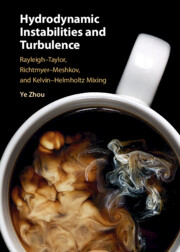 Hydrodynamic Instabilities and Turbulence
Hydrodynamic Instabilities and Turbulence Book contents
- Frontmatter
- Dedication
- Contents
- Preface
- Acknowledgments
- Part 1 Fundamentals
- Part 2 Hydrodynamics of Complex Flows
- Part 3 From the Microscopic to Cosmic Scales
- 18 High-energy-density physics
- 19 Inertial confinement fusion implosion
- 20 Laboratory applications
- 21 Astrophysical and space applications
- 22 Mixmodels
- 23 Numerical simulations of mixing
- 24 Does 2D turbulence resemble 3D turbulence?
- References
- Index
18 - High-energy-density physics
from Part 3 - From the Microscopic to Cosmic Scales
- Frontmatter
- Dedication
- Contents
- Preface
- Acknowledgments
- Part 1 Fundamentals
- Part 2 Hydrodynamics of Complex Flows
- Part 3 From the Microscopic to Cosmic Scales
- 18 High-energy-density physics
- 19 Inertial confinement fusion implosion
- 20 Laboratory applications
- 21 Astrophysical and space applications
- 22 Mixmodels
- 23 Numerical simulations of mixing
- 24 Does 2D turbulence resemble 3D turbulence?
- References
- Index
Summary
Intense lasers are now being used to probe the physics of fluid dynamics in the high energy density physics (HEDP) regime, a term roughly referring to thermodynamic pressures greater than 1 Mbar. This approach allows us to design dedicated experiments to examine the issue of fluid instabilities in isolation. These laser platforms are also employed to recreate aspects of astrophysical phenomena in the laboratory, a specialized research area frequently referred to as laboratory astrophysics. Studying astrophysical phenomena in the laboratory with intense lasers offers many advantages: Repeatability, advanced diagnostics, controlled initial conditions, etc.
Keywords
- Type
- Chapter
- Information
- Hydrodynamic Instabilities and TurbulenceRayleigh–Taylor, Richtmyer–Meshkov, and Kelvin–Helmholtz Mixing, pp. 359 - 384Publisher: Cambridge University PressPrint publication year: 2024
